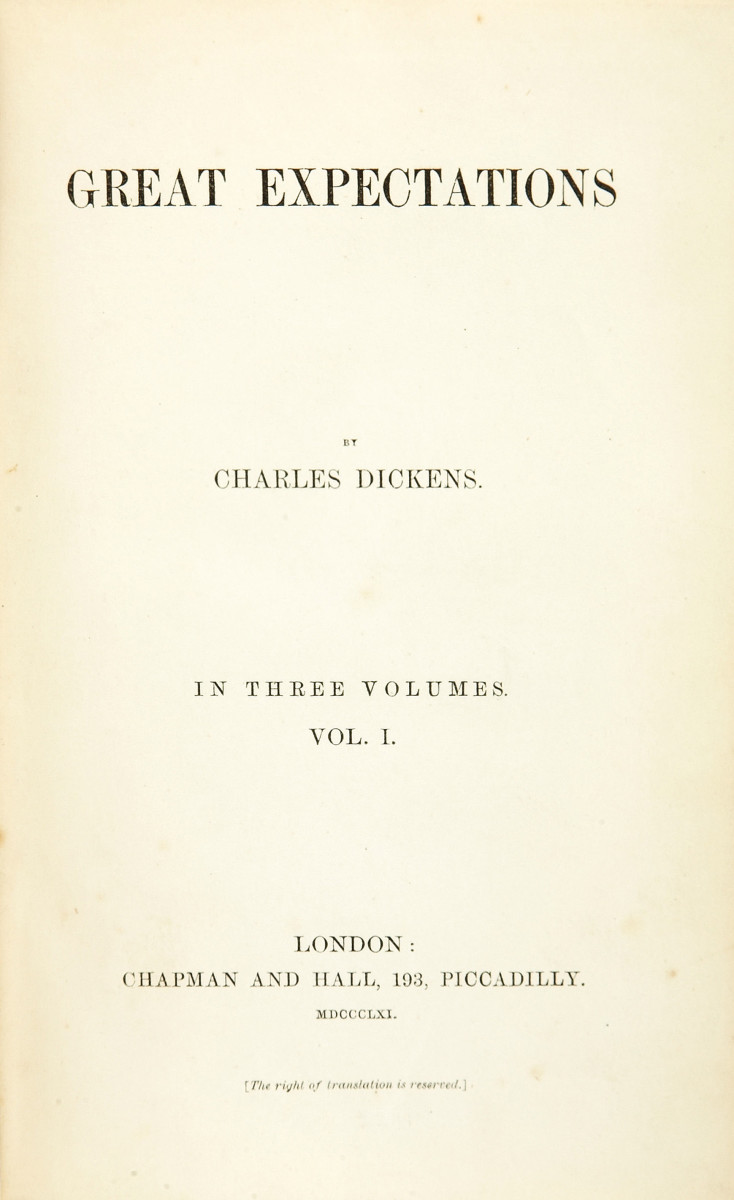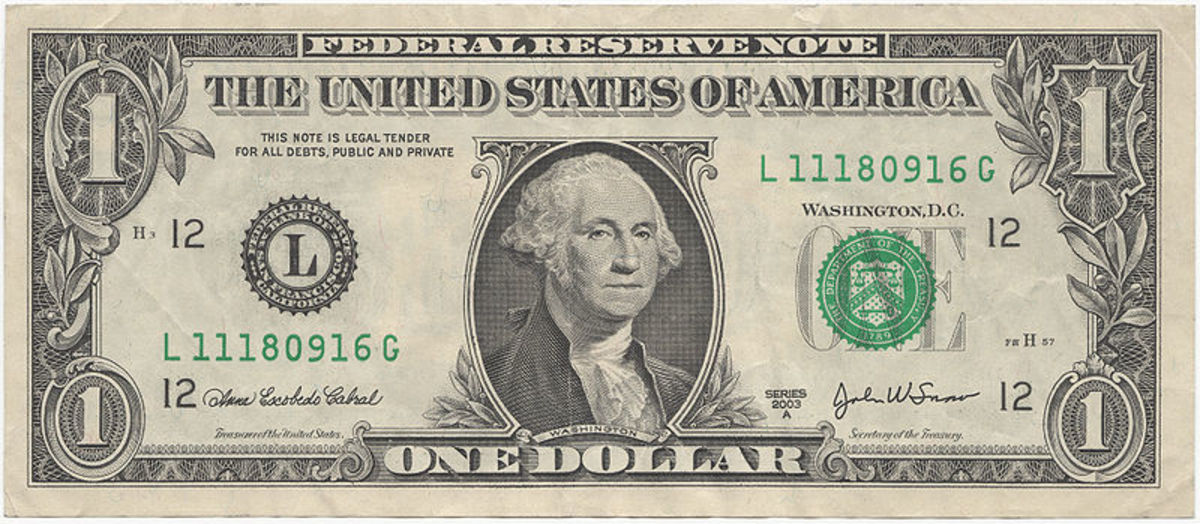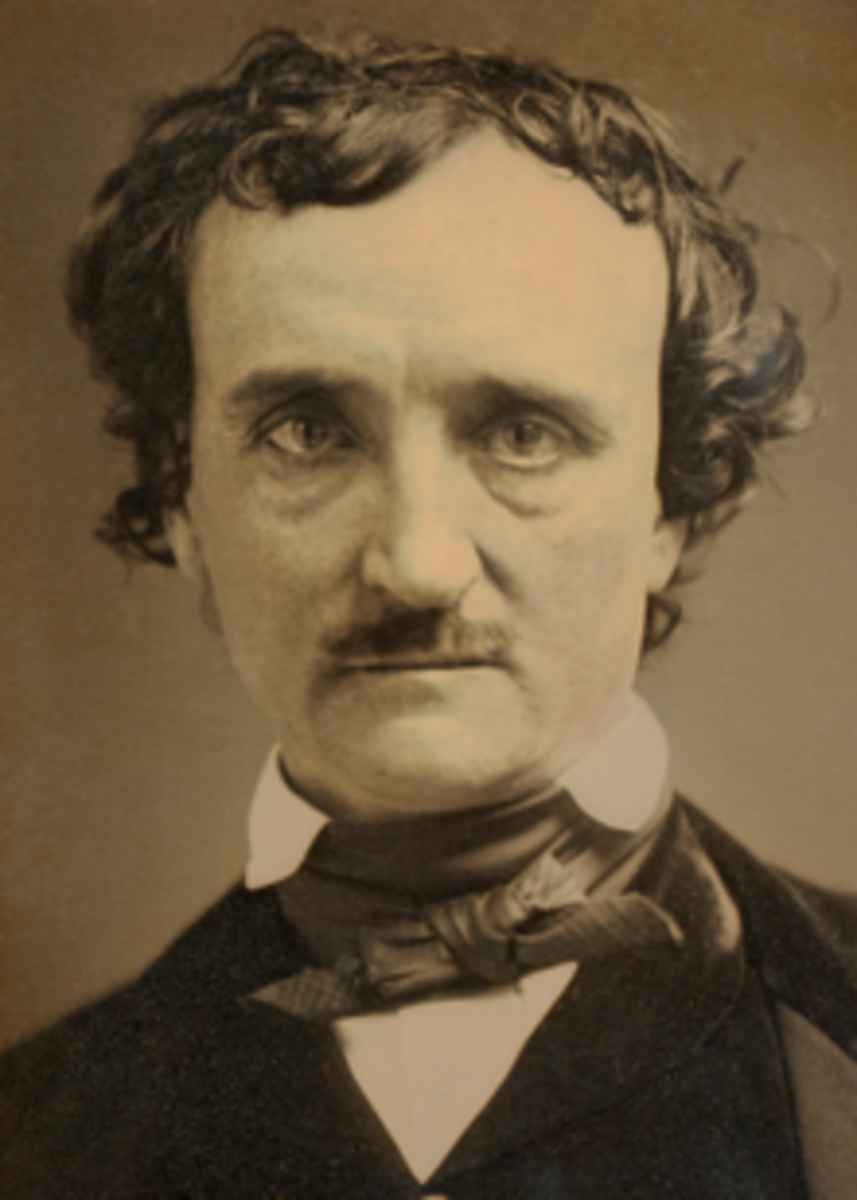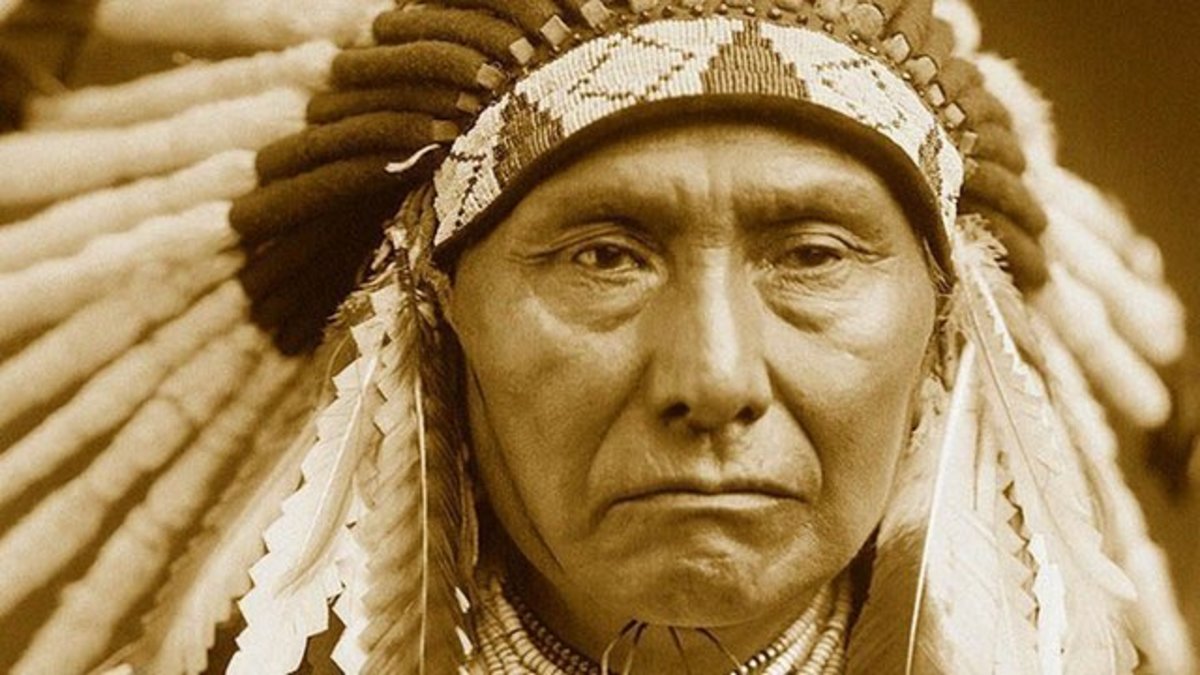- HubPages»
- Books, Literature, and Writing»
- Literature»
- American Literature
Fitzgerald's The Great Gatsby: Symbolism of the Protagonist and Antagonist
In 1925, F. Scott Fitzgerald wrote The Great Gatsby as a commentary on the antebellum society that flourished materially after World War I. For Fitzgerald, society had taken the end of the war too far, losing both their morals and professional ideologies. Further, while Fitzgerald was not widely received during his own time, his book has since become one of the “great American novels,” and, in looking at his satirical commentary, the reasons The Great Gatsby became part of the great cannon of literature is not surprising.
The Great Gatsby is considered “a work that seriously examines the theme of aspiration in an American setting” (Bruccoli, par. 19). The story itself is set in 1922, narrated by Nick Carraway who has recently graduated from Yale and is a veteran from World War I. He returns from the war and adventures to New York City to learn the art of the bond business. From there, the reader is introduced to the cast of characters, all the while understanding the age old saying that “it’s a small world.” Nick finds that he is neighbor to a mysterious, wealthy man named Jay Gatsby, the story’s protagonist. Gatsby’s life, as the novel unfolds, has been dedicated to the art of attaining wealth—following the ideals of the modern day philosophies of The Secret and the law of attraction. However, in Jay Gatsby lies a dark past which the narrator finds repulsive. As Nick discovers, Gatsby attained his wealth by means of criminal activity, even trying to attain Daisy Buchanan through corrupt means.
Daisy, for her part, is actually Nick’s cousin. She is clearly attractive, as she has won the hearts of many men, including Gatsby himself. In a desperate cry for love, Daisy ends up marrying Tom Buchanan (forgetting her pact to wait forever for Gatsby) and lives out her days across the street from Gatsby, frittering away her time in sadness as her husband cats around with other women.
Tom happens to have shared a past with Nick, as they were in the same social club at Yale. But in Tom’s nature lies the heart of a true antagonist. Truly, Fitzgerald, in his assessment of Tom, has delivered a clear villain; a man who is cruel without remorse, a man whose wealth seems to have corrupted his very soul. It seems his life’s purpose to hurt Gatsby, first by taking Daisy from him, and later in his own nefarious actions which lead to Gatsby’s death. Tom’s affairs extend to Myrtle Wilson who is taken in by his wealth but ends up killed in a hit and run by a devastated Daisy. George, Myrtle’s husband, is destroyed by Myrtle’s death just as Gatsby was destroyed by his unrequited love for Daisy—and, after speaking with Tom, George believes that Gatsby was her murderer and shoots him in cold blood before killing himself. Thus the sick soap opera comes to a conclusion.
Motivations and Actions of the Protagonist and Antagonist
At times, Fitzgerald's satirical commentary can be a bit “heavy-handed” (Gross, 170).. Jay Gatsby’s “whole effort in the book is to get his relationship with Daisy back to the way it was before the war” (Dilling, “Character Descriptions”). However, because Gatsby is presented as the protagonist of the story and his desire for Daisy is enough to make even readers swoon, it is easy to forget that he is a criminal. But Fitzgerald makes ample use of this particular element to detail various, real, criminal activities from his time including “one of the worst scandals in the history of American sports, the fixing of the 1919 World Series, and on the greatest political scandal of Warren Gamaliel Harding’s administration, the Teapot Dome case” (xiii). In this representation, Gatsby becomes the direct parallel to the roots of organized crime in the early nineteen hundreds.
The evolution of the narrator is demonstrated by Nick’s emotional growth based upon his experiences with Gatsby. Indeed, “Nick has been vitalized by Gatsby, turned into a creative manipulator of time and space by a model who made himself in such terms. Therefore, Gatsby cannot be said to fail, even in terms of the novel's plot” (Bloom, 46). In this, even the narrator is not exempt from the manifestations of symbolism. Gatsby, for Nick, represents a rebirth, for “although Gatsby has been robbed of his dream and his life, Nick has inherited his gift to create. And it is not a private gift, but instead becomes Nick’s ability to tell Gatsby’s story, to write the novel we are now reading” (46). Gatsby, in this, even becomes a gift for the reader as his story, told through the heart of a protagonist is touching, despite his criminal activity.
Even more, “witness the novel’s last page, where Gatsby’s quest is ultimately compared to life’s quest against death, a vision large enough to take in author and reader alike” (Bloom, 46). From this depiction, a reader can almost literally compare the life and tribulations of Gatsby to Fitzgerald himself, for while Fitzgerald didn’t meet his maker in the manner of Gatsby, the ideals shared between the two are undeniable. It is well-known that Fitzgerald found himself within high-society’s money and divided morals, which, in looking at Gatsby, becomes a fairly direct parallel.
Moreover, there is also the “parallel to the divided selfhood of Gatsby provided by the narrator, [and] the divided selfhood of the morally ambivalent Nick. Gatsby cannot distinguish time now from time past and future, nor right from wrong, whereas Nick is morally ambivalent not because he does not know right from wrong but rather because he is false to himself, a hypocrite” (Bloom, 58). One cannot truly define the moral compass of Gatsby, but as seen through Nick, a reader understands his conflict. Not only is Gatsby living with the destruction of unrequited love, but he has committed crimes to attain the woman of his dreams, only to lose her in the end to another man—a man who has no conscious and seeks to destroy those around him, including the love of Gatsby’s life.
Use of an Impartial Narrator
As a literary artifice, “Nick is the window of our viewpoint of Gatsby’s romantic dream, the romantic being placed thus within a framework of cynical realism. Nick’s character is determined thus by his function in the novel” (Bloom, 58). Fitzgerald could have told the story of Gatsby and his unrequited love from Gatsby’s point of view, as most novels focus in this manner upon the protagonist, giving them the ear of the reader, to gain the insight and emotional draw to the protagonist and his or her problems. However, in choosing an impartial narrator (though Nick is hardly impartial in his analysis of the characters which populate his life), Fitzgerald has access to deeper symbolisms than he could have achieved with a different method of narration or point of view. Even more, with the insights gained by Nick’s daily analysis of events and characters, a reader has a unique understanding of the dilemma that Gatsby faces, comprised equally with the motivations and stereotypically malevolent actions of the antagonist. In this manner, the reader is treated to an equal distribution between the two main characters and is given a chance to determine who they will side with, as both Gatsby and Tom have their flaws.
However, while Gatsby chooses his path of treachery for the love of a woman, Tom Buchanan does quite the opposite, as he was born with the wealth that Gatsby sought to attain. Tom, for his part, “is in fact a vicious, self-deceived sentimentalist” (Mizener, 9). In his own actions, Tom plays the part of the abused victim, forcing others to behave in ways that he himself does not maintain. His very essence is “based on depraved self-pity. He is never more typical than when coaxing himself to tears over a half finished box of dog biscuits that recalls a drunken and illicit day from his past…his self-pity is functional” (138). He is the ultimate example and parallel to the stereotype of the American boy raised with a silver spoon in his mouth, who grew up, but who never grew to understand the meaning behind morality.
Further, Tom is a racist and a sexist, but his wealth and upbringing have corrupted him to the point that he does not even consider holding to the higher values that he demands out of others, most specifically, Daisy. For, the moment he considers that Daisy might be involved in an affair with Gatsby, Tom irrevocably snaps, forcing events into motion that will destroy everyone in his path.
There always existed a “conflict between culture and wealth in his background [that] made Fitzgerald very conscious both of money and of social standing” (Gross, 18) which was the birth of his satirical ideals to expose the influence of money upon the actions of those who have a higher social standing—and thus the birth of his creation, Tom Buchanan. For, in the very “description of Tom we are left physically face to face with a scion of those ruthless generations who raised up the great American fortunes, and who now live in uneasy arrogant leisure on their brutal acquisitions” (Mizener, 137). Saying that Tom is a parallel to this stereotype is about as obvious as the use of Tom to represent this stereotype in the first place. In this satirical device, Fitzgerald’s message is ultimately clear: Tom is a plot mechanism meant to be stereotypical and meant to be Gatsby’s downfall to highlight Fitzgerald’s sardonic message.
Further, Tom “is virtually Gatsby’s murderer in the end, but the crime that he commits by proxy is only a symbol of his deeper spiritual crime against Gatsby’s inner vision. Gatsby’s guilt, insofar as it exists, is [a] radical failure…to understand that Daisy is as fully immersed in the destructive element of the American world as Tom himself” (Mizener, 138-139). In this plot device, Fitzgerald is demonstrating the destruction of the American dream by providing a cast of characters to exemplify certain pivotal elements.
Commentary on the Mores and Morals of a Materialistic, Post-War Society
Indeed, at the end of the story, Nick reflects that the people within his neighborhood have undergone a phenomena—the American dream was corrupted by the wealth it is meant to represent. Gatsby, in his quest for financial success, was in the end destroyed by the very dream which made him the “great” Gatsby of the title. And, his quest for Daisy was corrupted just as his attainment of wealth was corrupted by his criminal activity. Even further, Tom “and Gatsby represent antagonistic but historically related aspects of America. They are related as the body and the soul when a mortal barrier has risen up between them” (Mizener, 138). From this, it can be said that Fitzgerald used Tom as a symbol, or even stereotype, for the downfall of the American dream. A dream which Fitzgerald believed was being corrupted by the very men that Tom represents in their quest for financial success after the war.
In the end, The Great Gatsby “captures in a work of conscious artistry all the yearning desire and anguished disappointment of its hopelessly romantic hero” (Pelzer, 77). Moreover, “Gatsby’s story is, however, more than the story of an individual. It is, in fact, the story of America. Gatsby’s dream is the American Dream; his successes and failures are America’s successes and failures” (77). When the novel came out, Fitzgerald’s intentions for a satirical commentary were clear. He meant to tell the story of a floundering hero, a floundering America, and in this manner demonstrate his ideal that society was better off before the war ruined the very essence of what it meant to be American—before materialism became the moral compass for a once spiritually and intellectually thriving country.
The American Dream has always been one of success, both financial and professional, both in family, and in love. To achieve the American Dream is to live life to its ultimate value and encompassment. Gatsby, in his way, is thus the perfect parallel to America. Moreover, “in this correspondence, Fitzgerald creates his own version of national tragedy. The promise of a dream lies at the heart of Fitzgerald’s American classic, but it is a dream corrupted by money and betrayed by carelessness” (Pelzer, 77).
Moreover, F. Scott Fitzgerald’s work “is valued for the vividness with which it renders a historical era; perhaps more than by any other American novel written in the 1920’s, we are convinced that we hear the voices of people speaking from that decade before the advent of talking motion pictures” (Giltrow, 476). Even more, Fitzgerald’s “marketing ploy, which proposes using a real man as a prop, is part and parcel of a society whose proliferation of images has distorted the relationship between original and representation” (Barrett, 540). From this, the probable interpretation is that Fitzgerald meant his characters to portray certain points of view within his satirical commentary.
As depicted in The Great Gatsby, man had become corrupt by his own need and materialist desires and the focus on spiritual and intellectual growth and the American Dream were lost. And, in this, the protagonist and antagonist can be viewed as direct parallels to the destruction of the American Dream and all that such destruction entails. Moreover, through this study and character analysis, the literary illusions and satirical commentary of Fitzgerald demonstrate his ideals with clever and palpable symbolism.
References
Barrett, Laura. “Material without Being Real: Photography and the End of Reality in The Great Gatsby. Studies in the Novel 30.4 (1998): 540.
Bloom, Harold, ed. Gatsby. New York: Chelsea House Publishers, 1991.
Bruccoli, Mathew J. “A Brief Life of Fitzgerald.” 4 December 2003. Board of Trustees of the University of South Carolina. 16 July 2009 <http://www.sc.edu/fitzgerald/biography.html>
Giltrow, Janet, and David Stouck. “Style and Politics in The Great Gatsby.” Studies in the Novel 29.4 (1997): 476+.
Gross, Dalton, and MaryJean Gross. Understanding The Great Gatsby: A Student Casebook to Issues, Sources, and Historical Documents. Westport, CT: Greenwood Press, 1998.
Mizener, Arthur. F. Scott Fitzgerald: A Collection of Critical Essays. Englewood Cliffs, NJ: Prentice-Hall, 1963.
Pelzer, Linda Z. Student Companion to F. Scott Fitzgerald. Westport, CT: Greenwood Press, 2000.
The Great Gatsby Website. 26 May 2001. Andrew Dilling. 16 July 2009 <http://www.geocities.com/andrew_dilling/>








